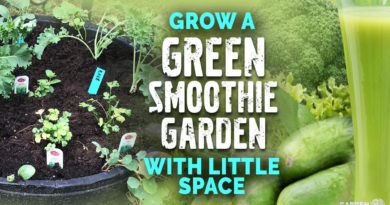Perfect Potting Mixes for Container Gardening
Container gardening is a perfect option for those just learning how to grow plants, as well as those with little space. There are a variety of potting mixes, both commercial and homemade, available for use as a growing medium for plants.
Here are the basics on what can be found in many potting mixes, and for what purpose.
Soil is comprised primarily of fragments of mineral rock. As rocks break down from weathering or erosion, they are broken into smaller pieces. The small pieces are called sand, the really small pieces are silt and the tiniest pieces are clay. The soil texture—sandy loam, silty clay, sandy clay, etc.—is based on what percentage of each a soil contains. For example, sandy loam is mostly sand and silt, and silty clay is mostly silt and clay. Organic material in true soil is only about 5%. Soil is heavy and tends to have aeration issues. Although it is possible, it is pretty uncommon to use actual soil in container gardening.
Email Newsletter
Join thousands of other growers who are already receiving our monthly newsletter.
Soilless potting mixes are intended to be an improvement over soil when used in containers or garden plots. They tend to be made from a blend of both inorganic and organic materials designed to be lighter and better draining than soil. The ideal potting mix provides suitable aeration, moisture retention and anchoring for the plant’s root system. The amount of air space in a potting mix is called the porosity. A porous mix will dry out quickly and require frequent watering; a non-porous mix may stay wet too long and have overwatering and aeration issues.
Read also: Biodynamic Compost
Potting mixes tend to be mixed from different ingredients intended to achieve an overall result. For example, perlite adds porosity, and peat and coco coir both increase water retention, so a combination of perlite and peat or coir might be used to achieve a balance between the two that is conducive to plant growth. Although there are many ingredients found in potting mixes, common organic components of potting mixes often include peat, coir, rice hulls, compost, humus and wood chips.
- Peat moss holds water well when moist, although it can become somewhat hydrophobic when allowed to completely dry. Peat moss is harvested from peat bogs. Moss grows on top of older dead moss and in turn dies, decomposes and becomes peat moss while new growth continues above. It is similar to humus in that it is the more stable stage of plant decomposition.
- Coir is made from ground coconut husks, and is used primarily for water retention and structure. Once a waste product of the coconut industry, coir has become a popular choice either by itself or in combination with other ingredients.
- Rice hulls are a by-product of the rice industry. They break down slowly, and offer a nice environment for micro-organism growth—so much so they should be used in moderation so as not to encourage an overabundance of such growth.
- Compost (preferably homemade) can be included or added to potting mixes. While compost by definition is still in the decomposition stage, the more stable humus (compost that has completed decomposition) can also be used. Although humus does not have the same nutritional value as compost since decomposition uses nutrients up, it still contains useful beneficial acids and adds structure to the mix. Not only does compost contribute water retention and structure, it also contains many useful macro- and micronutrients, as well as beneficial acids and micro-organisms.
- Wood chips, sawdust, bark and other wood products are also used in some potting mixes. Smaller particle sizes hold more water, but also break down faster. Large wooden particles break down slowly, but are not as absorbent.
- Biosolids are occasionally used in low-quality potting mixes. Biosolids are made from city sewage sludge, and may contain harmful chemicals and hormones. While not illegal in the United States at this time, my personal recommendation is to avoid any product containing biosolids.
Common inorganic components of potting mixes include perlite, vermiculite, pumice, grow stones, rockwool and expanded clays, which all contribute to porosity. They also are similar to each other, in that they are made by melting rock or glass and then manipulating it to increase surface area and air space.
Read also: The Scoop on Using Poop in the Garden
Another attribute of potting mixes to consider is their starting fertilizer “charge,” if any. Many potting mixes contain at least some starting nutrients, although the amount included varies from just enough to help avoid minor nutrient deficiencies up to products designed to be used with little to no additional fertilization.
Commercial mixes can be convenient as they often include a variety of components and save the consumer from having too many half-filled bags of ingredients in their garage. Mixing large amounts of potting mix by hand can be strenuous work, and miscalculations with the amendments used can be detrimental to plant growth.
Even if a gardener chooses the convenience of purchasing a commercial potting mix and has no intention of making their own, they should have some understanding of the ingredients so they can make informed selections. Starting with a good potting mix can make a bushel of difference in how well a container garden performs.




